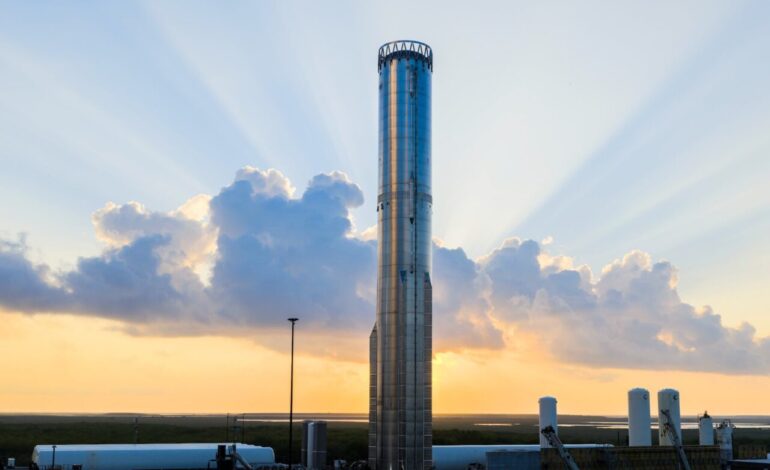SpaceX’s Starship Booster Suffers Explosion During Testing Phase

SpaceX’s latest testing phase for its next-generation Starship encountered a significant setback when the upgraded Booster 18 exploded during pre-launch operations at the company’s Massey test site in Texas. This incident raises concerns just months before the anticipated first orbital flight of the Starship, scheduled for early next year.
The initial round of tests on Booster 18, which is the first Super Heavy designed for Starship version 3, began on September 28, 2023. Footage from the testing site captured the explosion, while later images revealed extensive damage to the rocket’s lower section, where liquid oxygen propellant is stored. SpaceX, in a post on X (formerly Twitter), noted that the test operations were focused on evaluating the booster’s redesigned propellant systems and structural integrity. However, the company did not provide further comment on the explosion or the resulting damage.
Transitioning to a New Era
The recent incident follows the successful final launch of Starship version 2, which completed its mission with a suborbital trajectory after a two-year testing period. SpaceX is now shifting its focus to the larger version 3, which is designed to accommodate more propellant and features third-generation Raptor engines that promise enhanced power and efficiency.
Despite the successes of the last two test flights, SpaceX’s path has not been without challenges, as earlier launches this year faced multiple failures. The stakes are high for the new prototype, which aims to incorporate several upgrades to prevent the explosive failures seen in earlier versions. Elon Musk, SpaceX’s founder and CEO, acknowledged the complexity of the transition, stating that “pretty much everything changes on the rocket with version 3,” suggesting there will be a learning curve with the new design. He indicated that the upgraded Starship “might have some initial teething pains because it’s such a radical redesign.”
Implications for Future Missions
The cause of the Booster 18 explosion remains uncertain. It is possible that SpaceX intentionally pushed the rocket to its limits to assess its performance under extreme conditions. Regardless, the company is under pressure to deliver a reliable Starship capable of landing astronauts on the Moon as part of NASA’s Artemis 3 mission, targeted for 2027. Delays in development have prompted NASA’s acting head, Sean Duffy, to suggest that the agency might consider reopening the Artemis 3 contract to other competitors if progress does not accelerate.
In addition to lunar ambitions, Musk has expressed interest in launching an uncrewed Starship to Mars during an upcoming window next year. The feasibility of these plans hinges on the success of the next-generation Starship in reaching orbit within the next few months and mastering the complexities of flying a larger rocket along a new trajectory.
As SpaceX moves forward, all eyes will be on the subsequent tests and developments of Booster 18 and the Starship program, as the company attempts to solidify its position as a leader in space exploration and technology.






